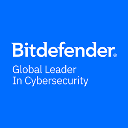10 categories of malware to protect your business from cyberthreats
Do you want to protect yourself against the risks of computer attacks? The first barrier is knowledge. As Sun Tzu said in The Art of War: "to win, you must know your enemy."
This maxim also applies to virtual conflicts! That's why we've put together a comprehensive guide to everything you need to know about malware. The main categories of malware, new forms to watch out for in 2025, best security practices, anti-malware software... We take you through it all.
Definition of malware: what you need to understand
What is malware?
Let's go back to basics: what is malware? It's software designed to harm the endpoints of a network system. From disrupting operation to damaging files, cybercriminals impose different missions on their malicious code, depending on the objectives to be achieved.
What are the objectives of malware?
As is often the case when it comes to criminal actions, the main motivation is greed. Bank data theft, ransomware blackmail... There are many ways to monetize computer attacks. And there's no denying it: cybercriminals are pretty creative! 🙃
Malware is also often used for espionage purposes. Governments, competing companies or the merely curious seek access to your personal or professional information for all sorts of nefarious reasons.
Finally, it may sound crazy, but some malware is aimed purely at destruction. Deleting files, paralyzing systems... These attacks seek only to cause harm, without making any profit from the attack.
What are the risks associated with malware?
The consequences of an infection can be disastrous for your company.
- Firstly, financially: theft of money, bank fraud, or the cost of restoring systems. The bill can quickly skyrocket.
- Your privacy is also at risk, from identity theft, blackmail and surveillance of your online activities. Your personal data is extremely valuable and must not fall into the wrong hands!
- Operational risks are particularly acute for corporate IT systems. Loss of important files, data corruption, business paralysis... Malware can quickly turn your daily digital life into a nightmare.
What are the two categories of malware?
Passive malware
This type of malware acts unobtrusively, which is why it is so dangerous. 😶🌫️
Their main objective? To remain invisible for as long as possible in order to gather sensitive information. They install themselves silently and observe your habits, sometimes for months. Since they don't disrupt your system, you don't notice a thing.
Active malware
Active malware, on the other hand, does not seek discretion. They act, without concealment, to do maximum damage or make maximum profits. In this category, we find ransomware that will encrypt your sensitive files, or worms that saturate your networks.
Their main weapon? Speed of action. They can cause irreversible damage in just a few minutes.
The 10 best-known categories of malware
1- Viruses
Viruses are the most common type of malware. It consists of malicious code inserted into an application, which runs at the same time as the application itself. It then infects the network system to steal data, launch DDoS or ransomware attacks. The virus is therefore generally the first link in a more global malware attack. Its concealment within an application makes it a particularly dangerous threat.
Case in point :
In 2000, a virus spread via e-mail attachments. With the subject line "I Love You", it infected millions of computers, destroying all their data.
2- The computer worm
The worm infiltrates networks through vulnerabilities in operating systems. It has two major characteristics: it requires human interaction to spread, and it replicates itself without intervention.
Case study:
Discovered in 2010, and probably developed by American intelligence services, Stuxnet was introduced into Iran using a USB key. The aim? To thwart the operation of Iran's uranium enrichment centrifuges, in order to slow down their nuclear program.
Its creator, Sylvqin, told the story in a video posted on his YouTube channel a few months ago:
3- Trojans
Trojans disguise themselves as legitimate software to trick users. Once installed, they open a backdoor in your system for cybercriminals. 🐎 Unlike viruses, they do not replicate, but remain permanently hidden. They often serve as a launching pad for other, more sophisticated attacks.
Case in point:
In 2016, the Emotet trojan spread via fake banking e-mails. It stole millions of login credentials before serving as a gateway to deploy other malware on infected systems.
4- Ransomware
Ransomware encrypts your files and demands a ransom to unlock them. Ransomware is a business nightmare, as it can completely paralyze a business in a matter of hours. Cybercriminals particularly target critical data to maximize the pressure. But beware, paying does not guarantee the recovery of your files!
Case in point:
WannaCry infected over 300,000 computers in 150 countries in 2017. Hospitals, businesses, government departments... Everything came to a standstill for days, causing millions of euros worth of damage.
✅ Fortunately, solutions exist to protect you:
5- Spyware
Spyware (or spyware 🕵️) discreetly monitors your digital activities. Web browsing, passwords, conversations... everything goes through it. It then transmits this data to malicious third parties. Particularly vicious, it can even activate your webcam or microphone without your knowledge. A total violation of your privacy.
Case in point :
Pegasus spyware was used to spy on journalists and activists all over the world. It could access messages, photos and even locate victims in real time.
✅ Here too, we've got your back: we've prepared a comparative article on the best antispyware!
6- Adware
Adware bombards your screen with unwanted ads, redirecting you to malicious sites. The aim is to generate illegal advertising revenue by diverting users' browsing. Although apparently less dangerous, adware considerably slows down your systems and can serve as a gateway to other malware. Sound familiar? We hope not...
Case in point:
Superfish was pre-installed on Lenovo computers and injected ads into every web page visited. Although based on a legal economic system, Superfish exposed users to man-in-the-middle (MITM) attacks.
7- The keylogger
The keylogger is a piece of software that collects all your keystrokes, including passwords and banking information. It works in the background, completely invisibly. Cybercriminals then use this data to steal your identity or empty your accounts. If your smartphone slows down or someone tries to log into your accounts, this could be the sign of an attack of this type.
Case in point:
The Zeus keylogger stole millions of banking credentials between 2007 and 2010.
8 and 9- Rootkits and bootkits
Rootkits install themselves in the heart of your operating system to take complete control. They modify the computer's essential functions and become virtually undetectable. The benefits to the cybercriminal are manifold. They can make the victim system's resources available and even use it as a starting point for other attacks of the same type. Of course, he also gains access to your personal data.
Bootkits are like rootkits, but go even further. They are activated at boot-up, even before the operating system. Once in place, they can install any other malware.
Case in point:
The Flame rootkit was so sophisticated that it remained undetected for years in the Middle East. It could record conversations, take screenshots and even self-destruct to erase its tracks.
10- Botnets
A botnet turns your computer into a "zombie", remotely controlled by cybercriminals. Your machine becomes part of a network of thousands of infected computers used for massive attacks (DDoS, spam, cryptocurrency mining, etc.). And of course, you don't realize a thing. 🧟
Case in point:
The Conficker botnet infected over 9 million computers worldwide. It was used to distribute other malware and generate illegal advertising revenue, making millions of dollars for its creators.
4 new forms of malware to watch out for in 2025
As the performance of anti-malware software increases, cybercriminals are developing new threats. Yes, they're innovative too, unfortunately for us! Here are 4 new malware trends for 2025.
1- Malware-as-a-Service (MaaS)
The MaaS principle takes the SaaS (Software-as-a-Service) business model and adapts it to the criminal world of malware.
👉 In concrete terms, MaaS gives attackers access to complete hacking tools without the need for special technical skills. They access the dark net to purchase complete ransomware or phishing suites to carry out their malicious activities.
2- AI and autonomous malware
Artificial intelligence is revolutionizing all sectors, and the world of malware is no exception. What sets these new programs apart is that they automatically adapt to the defenses they encounter.
👉 No need for human intervention: they choose their targets, modify their code and launch their attacks completely autonomously.
3- Targeted attacks on IoT and mobiles
Connected objects and smartphones are becoming the new targets of choice for cybercriminals. Surveillance cameras, smart thermostats and connected watches can be hacked as soon as they are linked to a network. These devices are particularly vulnerable, as they have weak security features and are rarely updated.
4- Deepfakes and automated social engineering
Deepfakes now make it possible to create ultra-realistic fake videos capable of fooling anyone. These automated social engineering techniques use AI to create personalized voices, faces and messages.
In 2025, we had a good example of this type of attack with a very realistic fake Brad Pitt who extracted over 300,000 euros from his victim, in France.
How can I detect and protect myself from the various types of malware?
Protection against malware is based on two fundamental principles: human vigilance and technological protection. Here's how to combine these two approaches within your company.
Our tips
Tip 1: Raise your team's awareness of cybersecurity
The first step towards effective cybersecurity is to make your teams aware of good IT practices. All members of the company must be trained in the main dangers they are likely to encounter on a daily basis. For example, after-sales service staff who receive a lot of e-mails need to be alert to the signs of a phishing attempt. Executives, on the other hand, should be particularly wary of whaling. Every level of the company needs its own cyber training.
Tip 2: Update systems regularly
Updates are a way for software publishers to expand the functionality of their products, but not the only one. Updates are also a way of closing security loopholes identified in the previous version. Ultimately, this is the only benefit of malware attacks. Offering insights into new cybercriminal trends to better protect software.
Tip 3: Enhanced identification
Two-factor authentication has become indispensable in the face of new malware. Thanks to this extra security, even if your passwords are compromised, cybercriminals won't be able to access your critical systems. This type of authentication can take many forms: biometrics, physical tokens, SMS codes... Multiply the locks.
Tip 4: Continuous monitoring
Monitoring is absolutely essential for effective digital protection. Continuously monitor your systems for abnormal behavior on your network. Look for the following signs: unexplained slowdowns, unusual connections or data transfers. The sooner you detect an intrusion, the less damage it will cause.
Tip 5: Zero-trust strategy
Don't trust anyone, even inside your network. Every user and every device must be checked before accessing resources. By compartmentalizing your systems as much as possible, you limit the spread of malware in the event of an attack.
The 5 essential anti-malware tools
5 antimalware tools stand out on the market to protect your systems against malware. For each product, we give you its main features and price.
1 of 5
 ManageEngine EventLog Analyzer |  Avast Premium Business Security |  GravityZone by Bitdefender |  Malwarebytes |  Norton 360 |
|---|---|---|---|---|
| For companies with more than 1 employees | For all companies | For all companies | For all companies | For all companies |
| See software | See software | See software | See software | See software |
| Learn more about ManageEngine EventLog Analyzer | Learn more about Avast Premium Business Security | Learn more about GravityZone by Bitdefender | Learn more about Malwarebytes | Learn more about Norton 360 |
Avast Essential Business Security
Avast Essential Business Security is designed for small and medium-sized businesses. With this solution, all your company's workstations are protected against major threats.
When you install Avast, you benefit from the following features:
-
A firewall to protect against encryption, data leakage and online confidentiality.
-
Phishing detection tools.
-
Protection against all major malware and spyware.
-
AI technology to detect infected files and zero-day threats.
-
A management platform to control your security on the move.
Avast Essential Business Security is available from €28.26 per device per year. The free trial period is 30 days.

Avast Premium Business Security
GravityZone Small Business Security (Bitdefender)
GravityZone Small Business Security offers enterprise-class protection for small businesses. Its key feature is its modularity, enabling you to upgrade your security as your business grows.
GravityZone Small Business Security incorporates :
-
Multilayered protection based on machine learning and behavioral analysis.
-
Advanced ransomware prevention with automatic recovery.
-
Protection against zero-day attacks.
-
Anti-phishing and online fraud detection.
-
A centralized console for easy management of all your endpoints.
GravityZone Small Business Security starts at €227.49 per year for 10 workstations.

GravityZone by Bitdefender
Malwarebytes
Malwarebytes is a cybersecurity solution distinguished by its ease of use. It is designed for entrepreneurs and small businesses without technical skills.
It features multi-layered AI-powered technology to guarantee real-time protection against the latest cyber threats. A particularly effective defense against viruses, spyware, brute-force attacks and ransomware.
In terms of system performance, Malwarebytes also offers the advantage of four times faster browsing.
The Malwarebytes Teams version was voted Product of the Year by AV Lab, a testament to its quality.
Malwarebytes Team is available from €110.99 per year for 3 devices.

Malwarebytes
ManageEngine EventLog Analyzer
ManageEngine EventLog Analyzer is an advanced monitoring platform dedicated to real-time threat detection. With ManageEngine EventLog Analyzer, you can continuously analyze your system logs to identify suspicious behavior.
The tool integrates :
-
AI-powered behavioral monitoring.
-
Alerts in the event of malicious activity or breach attempts.
-
Automated compliance reports to meet regulatory requirements.
-
A centralized interface for managing your network security.
ManageEngine EventLog Analyzer is available from €0 per year for 5 log sources. However, for more professional use, we recommend the $595 Premium package, which can analyze from 10 to 1,000 log sources.

ManageEngine EventLog Analyzer
Norton 360
Norton 360 is cybersecurity software for both the self-employed and home users. It provides effective protection for your business and personal devices, thanks to its ease of use.
Norton 360 combines multi-layered protection against malware, ransomware and zero-day attacks.
It also integrates a secure VPN to guarantee the confidentiality of your connections, even when you're on the move or teleworking.
The native password manager facilitates strong authentication, while automatic cloud backup ensures the preservation of your critical data.
As an added bonus, Norton 360 regularly monitors the dark web to alert you to any leak of sensitive information.
The package starts at €49.99 per year for coverage of three devices, including 10 GB of cloud storage.

Norton 360
In a nutshell: a better understanding of malware categories means better protection for your business
You now know a little more about the main categories of malware and their associated risks. Knowledge is the basis for a real cybersecurity strategy. Raising awareness of best security practices, integrating anti-malware solutions, keeping abreast of the latest cyberthreats... Adopt a proactive approach to maximize your protection against malware.
Article translated from French
